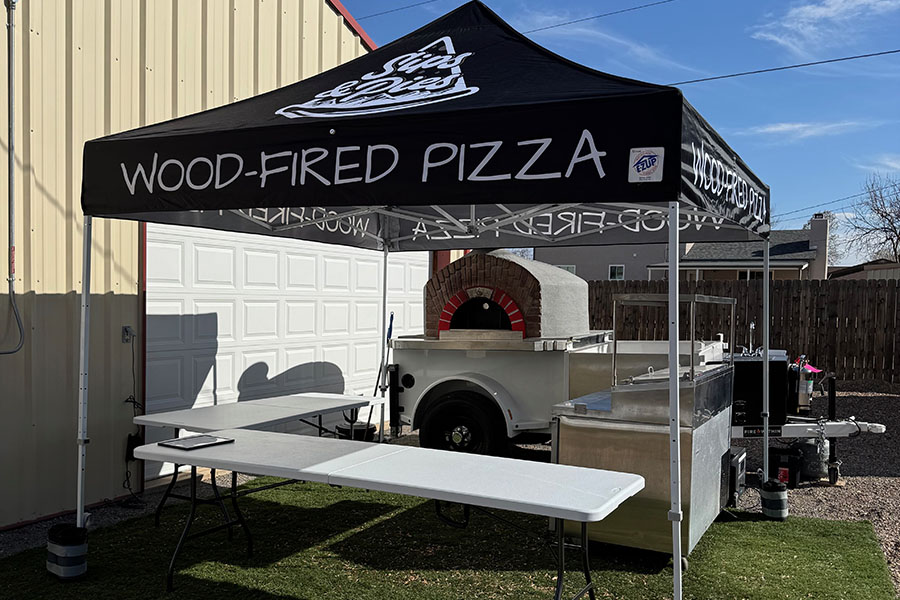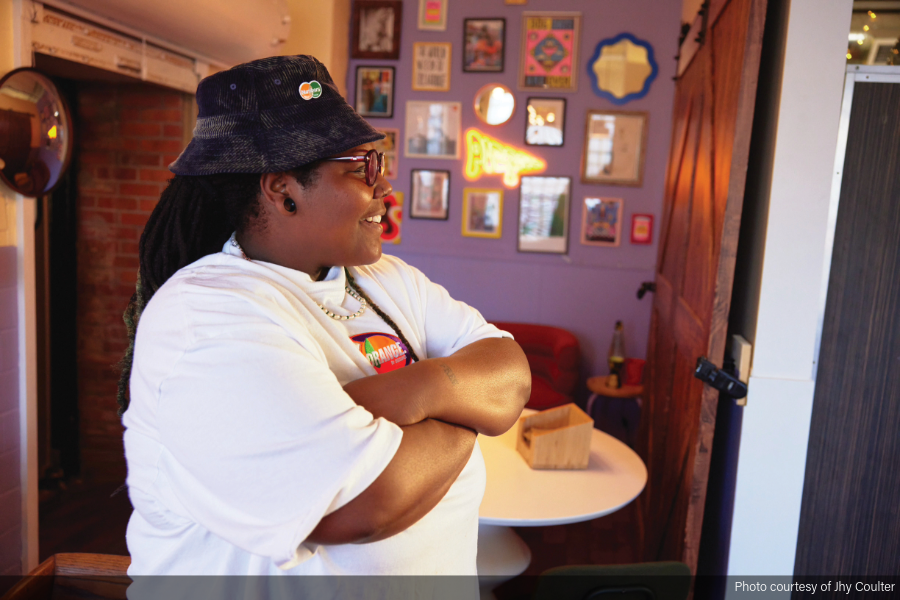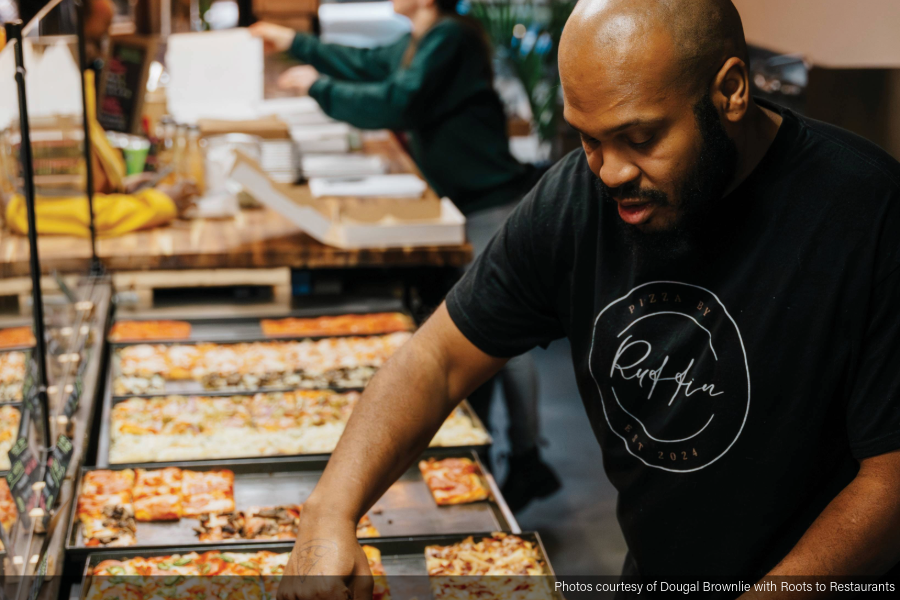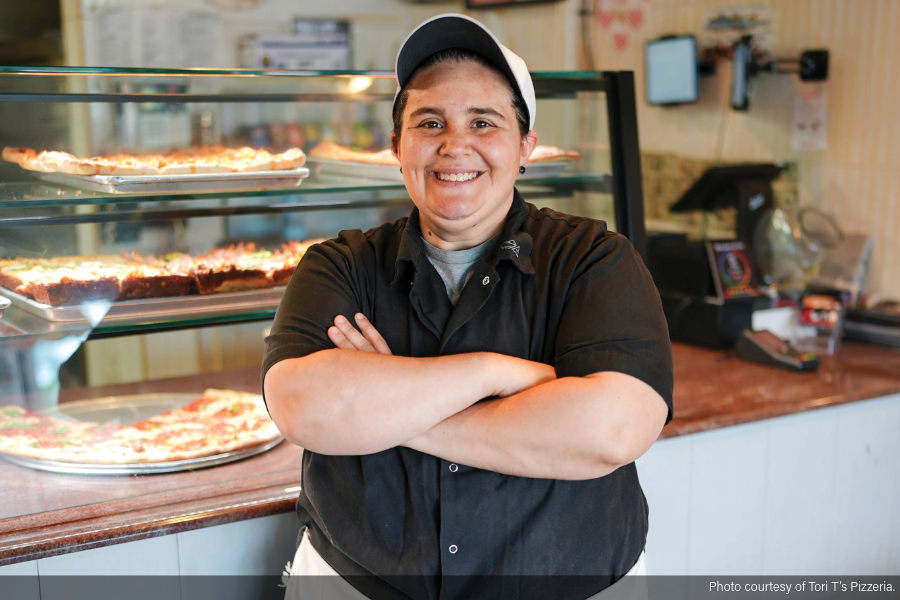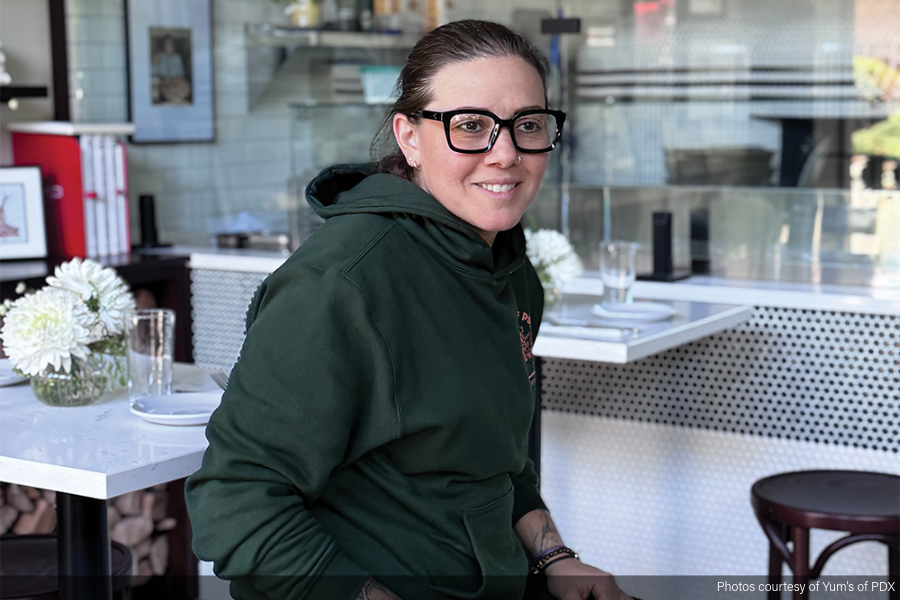The Perfect Pie at the Perfect Temp
If systems to serve food are unaligned and a once-piping-hot pizza arrives cold to a hungry diner, the customer will notice. Moreover, they likely will remember the meal—but not in a positive light. Nearly 70 percent of pizza customers report that getting the temperature wrong on their order ruins their dining experience, according to a survey from Alive & Kickin’ Pizza Crust.
“Food needs to be served hot,” says Biagio Cepollaro, managing partner of Via Roma in Camp Springs, Maryland. Crossing the line into too-hot territory, however, is also a concern. “Our pizza is cooked in an oven at two different temperatures, one for the dome and one for the deck,” Cepollaro says. The bottom of the oven gets to between 350 F and 400 F, while the top can reach more than 600 F. This ensures the pinsa, which is a Roman-style pizza made with a blend of rice, soy, wheat flour and dried mother yeast, is cooked evenly. Once the pizza is taken out of the oven, it is placed on a griddle for about 30 seconds. Some of the heat evaporates from it, and then it is placed on a wooden carrier and delivered to the table. “By the time it gets to the table, it is not too hot that it burns the customer’s mouth,” Cepollaro says.
With new online ordering systems, an increase in delivery demand, and more takeout options, providing food at the right temperature has been taken to a whole new level. To meet safety standards and keep customers satisfied, it’s essential to have a system that can be monitored and adapted as restaurant needs change. Use the following guidelines to make sure pies are served at their best—every time.
Understanding Safety Requirements
Health codes use the term “TCS (Time and Temperature Control for Safety)” to refer to foods that must be correctly stored, heated, cooled and prepared to reduce the risk of bacteria which could cause illness. “For pizzas, a minimum cook temperature of 165 F is usually adequate for food safety,” says Chris Boyles, vice president of food safety for Steritech, a company that provides food safety and operational assessments to the restaurant industry. “Verify the temperature at the thickest point, which will be the last place to reach the target temperature.” For deep dish, the point will typically be in the middle of the pie. “Of course, a higher temperature may be necessary for quality, especially of the crust,” Boyles says.
If pizza or other types of TCS foods are not served immediately after cooking, you’ll want to make sure they are properly held. “Holding hot means 135 F or above for safety,” Boyles says. “The optimal setting may vary by product since thinner items and sliced items lose heat more quickly.” Cold foods require storing at 41 F or below. “Monitor time and temperature that is staged for pick up or delivery,” Boyles says.
Putting Optimal Systems in Place
“Review procedures to ensure everyone has clear and accurate directions for proper food handling,” Boyles says. Include important food safety and storing information in staff training sessions. Equip managers to monitor the procedures for serving to tables, along with delivery and takeout. “Consider using an automated temperature sensor system to monitor temperatures continuously,” Boyles says. “Such systems can be used to track temperatures throughout the day to identify patterns and ultimately help identify root causes.” If a unit doesn’t hold temperatures during rush hours, there may be an underlying issue with stacking foods or door management.
For items that leave the restaurant, a closed container will help pizza maintain its temperature. Other menu items might require different transporting units. “For fried items, we use containers with holes in them,” Cepollaro says. “This allows steam to get out.”
Customers can also be provided with instructions on reheating and safety. “Leftover pizza should not typically be left out of temperature control for more than two hours,” Boyles says. In addition to including directions to promptly store leftover pizza in the refrigerator, you could add practical ways to serve later, such as warming for 10 minutes in a 350 F oven.
Storing and serving at the right temperature can also ensure high quality in terms of nutritional value. “Some foods might lose their nutrients when subjected to incorrect temperatures,” says Elliot Reimers, a NASM certified nutrition coach at Rave Reviews. Spinach, for instance, can lose up to 60 percent of its nutritional content if it’s overly exposed to heat for a prolonged time.
If you recently expanded your seating area, takeout or delivery segments, adding on warming methods may be needed. “There are a number of ways to keep food at the proper temperature,” says Jeff Ehrlich, manager at Restaurant City Warehouse in Waterbury, Connecticut. “These include various types of heat lamps, hot food serving counters, warming cabinets, insulated pizza delivery bags, pizza display cabinets, and reheating slices in the pizza or convection oven.” In his pizzeria, Cepollaro relies on empty plates kept warm under heat lamps. Once they are filled, they are served immediately.
Correct Temperatures in Automated Pizza Solutions
Piestro, an automated pizza creation startup, relies on machines to produce pizzas in a matter of minutes. “We use pre-pressed, uncooked dough made of the freshest ingredients, and it is stored in shelves within the machine,” says Massimo Noja De Marco, CEO of Piestro. Toppings are added to the dough, which is then ready to be cooked.
“Our conveyor oven was built to work at 800 F to cook a pizza within three minutes,” De Marco says. “It uses a complex temperature isolation system that keeps the toppings and dough at proper temperatures from the heat of the oven.” The oven has a series of thermal reading sensors which can be monitored to ensure safety. After cooking, the pizza is dropped into a pizza box and delivered through a window to a customer or restaurant employee. “All of this is automated—so the pizza does not come into any human contact from cooking to packaging,” De Marco says.
Rachel Hartman is a freelance writer who covers small business, finance and lifestyle topics.


